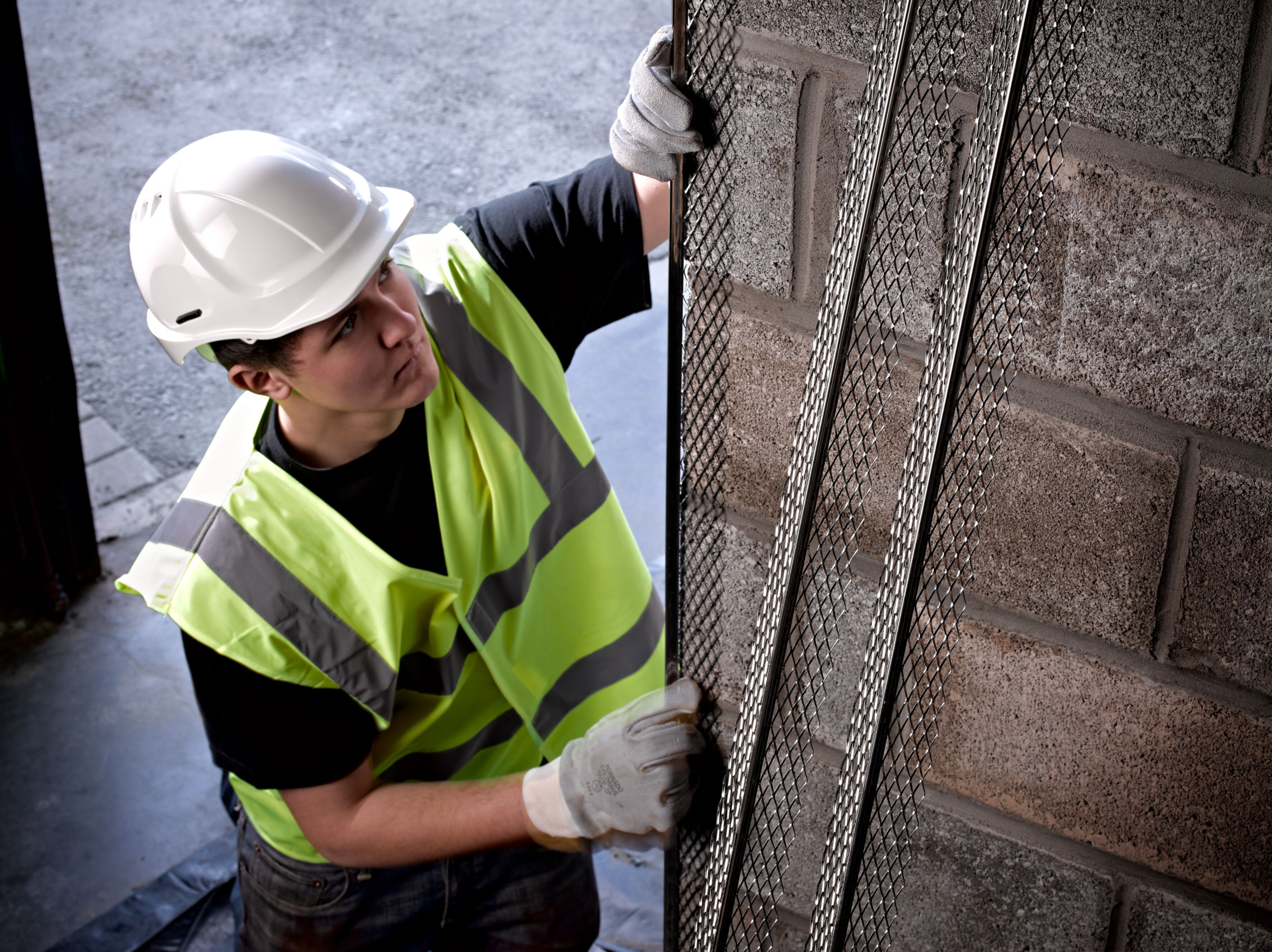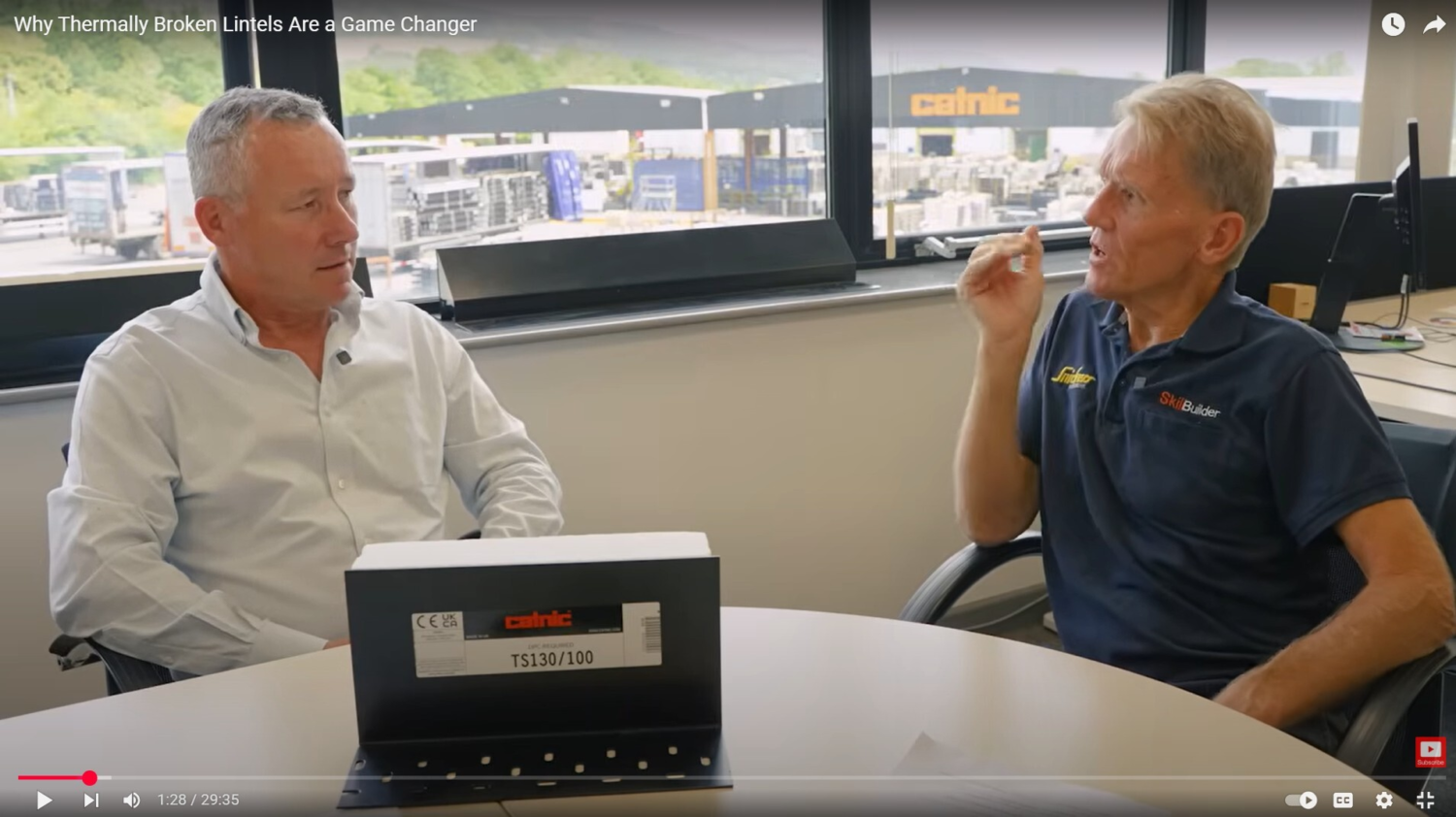Making the right choice of plaster bead will be vital if you’re to achieve a high quality professional finish. However, this will depend on a few key factors.
As a manufacturer of galvanised steel plaster bead and mesh, we know a thing or two about how to choose the best fit for your project. Here, we run through some considerations to bear in mind, while providing some recommendations.
Interior or exterior
Firstly, you must select a plaster bead that’s suitable for the intended location and conditions. The three main materials, galvanised steel, stainless steel and PVCu, all have different properties and therefore specific applications.
Galvanised steel beads are designed to be used for internal plasterwork. The zinc coating protects the steel from corrosion but is generally unsuitable for use in exterior areas.
Stainless steel render beads have higher built-in corrosion resistance due to their stainless steel properties, making them suitable for external applications and any interior areas where a higher level of moisture is present or expected. If used internally, stainless steel beads ARE NOT SUITABLE to use with gypsum based plasters.
PVCu (polyvinylchloride unplasticised) beads are recommended for applications with the most challenging environmental conditions both externally and internally. This is largely because PVCu is unaffected by moisture, salt and weathering and is resistant to damage and chemical attack.
Can you plaster corners without beading?
Simply put, you should avoid the plastering of corners without beading.
There are a couple of angle bead varieties that can be applied in corners. If you’re only going to apply a skim layer then skim beading will be sufficient. However, angle beads should be used on walls, with the application of undercoating and skim coating.
Special applications
Here's how to install plaster bead:
- Measure the length of the wall corner, allowing an inch so that the bead doesn’t come into contact with the floor.
- Use tin snips or strong scissors to cut into the open side of the bead at a slight angle, before turning and cutting the opposite side to break.
- Cut away the bottom edge of the bead so that it falls away on the solid edge.
- Use a spirit level to ensure that the plasterboard is completely straight and fix the beading to the outer corners (scrim tape, nails, wet plaster or tapping may be used here).
- Attach the beading to the wall corner or plasterboard tacks.
- Check that there’s no movement in the bead before plastering.
What kind of plaster beads are there and where should they be used?
Depending on the proposed application, there are various plaster beads available:
- Renderstop beads - used to obtain a neat, bell cast lower edge to external finishes and helps to protect masonry against run-off water.
- Plasterstop beads - provide clean, neat edges at openings or abutments onto other wall surfaces or ceiling finishes.
- Movement beads - allow for minor movement between adjoining surfaces resulting from the differential expansion in the underlying substrate or structure. This prevents the surface finish from cracking and ensures a long-lasting, high quality finish.
- Arch beads - bend to create curves and arch forms for decorative plaster requirements in thin coat and drylining applications.
- Depth gauge beads - provide a quick and accurate means of ensuring consistent, minimum plaster depths as plaster is simply ‘ruled off’ to leave the required thickness.
- Architrave beads – provide decorative shadow gap effect around doors and above skirting boards. They can also be used to create a clean division between varying wall finishes.
- Angle beads – provide true and straight corners which are resistant to chipping and cracking giving strength and protection against everyday knocks.
Quality
When choosing a plaster bead, it is important to remember that not all products available on the market are manufactured to the same level of quality and, as such, will not perform in the same way. The quality of the product has a key role in achieving a crisp, neat, durable finish to the plaster or render.
Stronger, more rigid beads will help deliver a precision finish that is only possible with a true straight edge. A higher quality, more durable bead will also be quicker and easier to install with less wastage as damaged products will not need to be discarded.
Therefore, a product manufactured from a heavier gauge of steel is the right choice for the best end results. Catnic galvanised beads are manufactured from steel gauge 11% and our stainless steel beads are 25% above the British and European standards requirements.

In the case of PVCu beads, the high quality of material used in manufacturing translates directly into a more rigid, durable and superior product. Our PVCu product range has been engineered from an exterior grade, UV-resistant material, and features a unique Pro-Grip™ adhesion system. The tiny grooves manufactured into the profile increase the surface area, creating a stronger key for the plaster or render. This speeds up the application and prevents slippage which is associated with some standard PVCu beads.
Plaster beads are commodity products and, as such, the lowest cost option is often perceived as the most attractive. However, using the cheapest profiles will make achieving a professional finish that also provides the desired durability far more difficult.
For all your steel plaster beads
From the galvanised steel depth gauge bead to the drywall angle bead, you can count on Catnic for your beading supplies. Simply get in touch on 029 2033 7900 to discuss your project requirements and make your order
More
-
![]()
- Plaster Bead & Mesh
- Guide
How to Fix an Angle Bead to Plasterboard
-
![]()
- Lintels
- Guide
Why thermally broken lintels are a game changer


